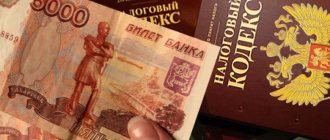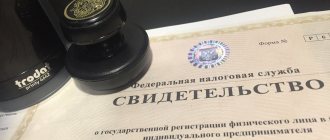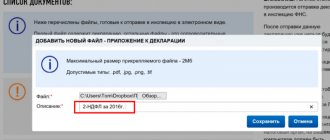In what cases does VAT pay?
The simplified taxation system is a convenient way of keeping records for many small firms and individual entrepreneurs. Its use significantly reduces the volume of documentation and replaces several taxes (by the way, VAT is among them).
Meanwhile, the Tax Code contains special situations - the regulatory document lists when a “simplified” person is obliged to calculate and pay VAT:
- the taxpayer carries out import operations and imports foreign goods into the country (clause 3 of Article 346.11 of the Tax Code of the Russian Federation);
- an organization or individual entrepreneur is a tax agent when purchasing or leasing state or municipal property (clause 3 of article 161 of the Tax Code of the Russian Federation);
- “Simpler” performs construction work for organizations under the general taxation system (OSNO);
- when carrying out operations related to trust management agreements, simple or investment partnerships (Article 174.1 of the Tax Code of the Russian Federation);
- in cases of issuing invoices with the allocation of VAT amounts at the request of buyers.
Failure to comply with the rules for accounting for VAT when performing these operations may result in financial losses for the taxpayer himself, and his partners will not be able to deduct tax amounts paid but not taken into account by the “simplified”.
Important!
Organizations and entrepreneurs who work under intermediary or contract agreements or issue invoices with VAT must keep a journal of invoices (clause 3.1 of Article 169 of the Tax Code of the Russian Federation). Carrying out operations that require the calculation of VAT entails the obligation to fill out and submit the corresponding declaration (clause 5 of Article 174 of the Tax Code of the Russian Federation).
Updated VAT return
Common mistakes
In the VAT refund process, businesses often make mistakes that are common.
Error 1.
Prim-Ok LLC sent the personal income tax declaration in writing by registered mail by Post. The tax authority notified the company of the fact of failure to submit reports.
Solution 1.
Starting from 2020, value added tax returns are submitted exclusively electronically. The paper form of the document is not accepted. To resolve the issue, the declaration must be sent electronically.
Error 2.
IP Ignatiev P.R. applies a simplified taxation system. The company exported goods, and after 7 months submitted a declaration and an application for VAT refund. IP Ignatiev's tax refund was denied.
Solution 2.
Individual entrepreneurs are not VAT payers. However, there may be a need to return it when exporting goods. In this case, the company has the right to ask for a tax refund, but the application and declaration must be submitted within six months from the date of the transaction.
Why calculate VAT compensation under the simplified tax system?
STS payers working in the construction industry often enter into contracts with customers who use OSNO. The main documents used in construction include cost estimates. It is he who describes in detail all stages of work, materials used and labor costs. Without an estimate, a construction or repair project will not be put into operation.
The absence of VAT in the estimate entails problems in mutual settlements between the customer and the contractor. The customer under the general taxation regime cannot deduct unaccounted VAT, and the simplified contractor cannot compensate for his costs paid for materials by tax.
Documents required for VAT deduction
There is no provision for VAT reimbursement under the simplified tax system, so incorrect accounting can lead to the simplifier losing 20% of the amount of the incorrectly prepared estimate. Often serious customers completely refuse to cooperate with simplified contractors who do not know how to work with VAT in order to be able to recover VAT.
More details
Can an individual entrepreneur issue an invoice without VAT?
Contract between individual entrepreneurs and individual entrepreneurs for the provision of services - sample document
By definition, individual entrepreneurs who have chosen the simplified tax system, unified agricultural tax, PSN or UTII do not charge or pay VAT. They can fill out an invoice for the client marked “excluding VAT”. This opportunity is also available to VAT payers who, for 3 consecutive months, have received income from sales, work or services not exceeding 2 million rubles. In total. This is reflected in Article 145 of the Tax Code of the Russian Federation.
Some adherents of “simplified taxation” and similar entrepreneurs who have chosen special tax regimes believe that this form of tax payment limits the circle of their clients. After all, organizations and entrepreneurs paying VAT need to receive a financial deduction for the tax paid. There is a need to obtain proof from the seller - an invoice indicating the amount of VAT.
Reimbursement of expenses
Can an individual entrepreneur issue VAT invoices using the simplified tax system? Entrepreneurs subject to special taxation can issue such a document, but they are not entitled to a deduction after such a procedure. On the contrary, after drawing up the document, they are required to send a declaration to the tax office with the following information from the invoice:
- number and date;
- buyer information;
- cost of goods (services);
- tax amount.
Now said tax must be paid. This is where misunderstandings begin. The situation caused disagreement between the Ministry of Finance and the appeal court. The Tax Service has clearly stated that its priority is the decisions of the highest court, i.e. financial penalties cannot be applied to individual entrepreneurs of this kind for late payment of VAT.
Attention! The VAT indicated in the invoice is not taken into account in the income of the individual entrepreneur who issued this document.
Do I need an invoice for individual entrepreneurs, which is issued without VAT? It happens that counterparties persistently ask for extradition. The client needs to meet halfway. It will eliminate the otherwise necessary procedure of filing a tax return. It is not necessary to add such an operation to the accounting journal.
How to correctly account for VAT costs under the simplified tax system
Typically, all construction costs in the estimate are grouped by cost items, for example, limited costs, cost of materials, operation of machines. The amount of costs in monetary terms is always indicated without VAT, and the tax itself is indicated in the “totals” column.
The contractor, who is on the simplified tax system, purchases materials at a price that includes VAT. However, he is deprived of the right to include the paid VAT amounts in the estimate, but takes them into account in his tax accounting as part of general expenses. Often, simplifiers completely exclude the VAT column from the estimate. There is a distortion in the calculations.
Our experts advise not to exclude the “VAT” column, but to replace it with the “Costs of VAT compensation under the simplified tax system” column.
Let's look at this situation using an example.
Example
LLC "A" (customer for OSNO) entered into an agreement with LLC "B" (executor for the simplified tax system) for the reconstruction of a furniture workshop. For repairs, it was necessary to purchase building materials and include them in the estimate. LLC "B" purchased construction materials for 240,000 rubles, of which 40,000 rubles are VAT paid to the seller.
According to the rules, the cost of materials is included in the estimate excluding tax. In our example, this is 200,000 rubles. However, there is also a tax amount that must also be taken into account somewhere.
| Right | Wrong |
| Include purchased materials in the estimate in the amount of 200,000 rubles. Replace the column “VAT” with the column “Costs for VAT compensation under the simplified tax system.” Calculate the amount of costs using special formulas. | Include purchased materials in the amount of 200,000 rubles in the estimate, and include 40,000 rubles of VAT paid as part of the price of materials in general business expenses. OR Write out an estimate to the customer, and then an invoice indicating the amount of VAT. The contractor who issued the VAT invoice is obliged to pay the tax amount to the budget in full. |
How does VAT refund work for individual entrepreneurs?
How to recover VAT?
Subject to the general procedure, reimbursement occurs strictly according to the law, and the report begins from the time the VAT declaration with the amount of tax to be reimbursed was submitted to the tax office.
Then a desk audit procedure takes place to find out reasonably whether the individual entrepreneur can return VAT. Only after this procedure is a decision made either in favor of the taxpayer, or he receives a refusal - complete or partial.
What to do if you receive a refusal? You can get a negative answer if the amount involved is too large, so controversial situations often arise. But the refusal can be appealed.
There are entrepreneurs who do not have the right to a deduction, but still obtain it fraudulently. But they will still be held accountable for such deception.
It is prohibited to claim a deduction if:
- the goods were not taken into account in the submitted declaration;
- the business is related to exports and services and VAT have not been paid.
Sometimes situations arise in which an individual entrepreneur has obtained a refund by application, and then it turns out that the refund was made undeservedly. In this case, both the businessman himself and tax workers will suffer.
If the allocated amount is not returned, the taxpayer will have to bear responsibility under the law. There is a penalty calculation, and the fine amount will increase every day.
There is a greater chance of being entitled to compensation if:
- The company ships goods for export. This is because the rate applied is zero percent;
- the amount of deductions is greater than the amount of VAT on sales.
Then VAT refund for individual entrepreneurs will be allowed based on the following grounds:
- Contract;
- invoices;
- documents in their original edition;
- updated declaration.
VAT compensation under the simplified tax system in the estimate in 2019: formula
To correctly calculate the amount of VAT compensation, you need to use the calculation formula and know some of the subtleties of their use.
Formula for calculating VAT compensation costs
| (MAT + (EM - ZPM) + HP × 0.1712 + SP × 0.15 + OB) × 0.20 | |
| MAT | material costs for performing work |
| EM | machine operating costs |
| ZPM | driver wage costs |
| HP | overhead costs (the standard for including overhead costs in VAT compensation is 17.12%, excluding the Far North regions - 18.2%) |
| JV | the company's estimated profit (the standard for including estimated profit in VAT compensation is 15%) |
| ABOUT | size of net equipment operation |
| 0,20 | VAT tax rate at the time of writing |
The coefficients used in the formula are universal and allow you to take into account VAT costs in the estimate. In 2020, due to general changes in VAT, the formula for calculating the cost of VAT compensation under the simplified tax system was updated.
Let us remind you:
- Since 2020, the VAT rate has increased from 18% to 20%. The first quarter of 2019 was a transition period and required significant costs for contract revisions. Taxpayers are required, according to the rules of the transition period, to organize the accounting of advance payments if the advance amount was received in 2020, and the supply of goods or services was registered in 2020. By the way, 1C-WiseAdvice clients successfully overcame the transition period and the change in the VAT rate, since all of them were sent a special letter in advance with a list of necessary actions that they need to take for a painless transition to the new rate.
- From the first quarter of 2020, the form of the VAT declaration has changed. Filing a declaration using the old form is equivalent to a lack of reporting and automatic additional fines.
We will prepare a tax strategy for your business
Who fills out the VAT return on the simplified tax system?
The simplified tax system assumes that there is no need to ask questions about paying VAT. However, this may be relevant in the following cases:
- When purchasing goods from a foreign supplier, if this supplier is not registered for tax purposes in Russia (if it is, then paying VAT is his responsibility) and, of course, if the goods are subject to VAT at all. Or if a buyer from Russia pays for work or services performed by a foreign organization.
- When renting and purchasing property owned by the state or municipality.
- In relationships within the framework of joint activity agreements (simple partnership, trust management). The nuances of VAT accounting for such cases are regulated in Art. 174.1 Tax Code of the Russian Federation.
- When issuing an invoice to a customer or buyer that includes VAT. Such situations may arise unforcedly. For example, an individual entrepreneur supplies goods to organizations that ask to issue invoices with allocated VAT. It is better not to comply with this request, citing regulatory documents that confirm your right to not issue invoices. However, there is no legal prohibition on issuing a “simplified” VAT invoice.
Each of these cases will require not only payment of tax, but also preparation of a tax return. The declaration will need to be submitted to the Federal Tax Service no later than the 25th day of the month following the end of the reporting quarter (paragraph 2, paragraph 5, article 174 of the Tax Code of the Russian Federation), and the method of submission may not be electronic.
If you have access to ConsultantPlus, check whether you have correctly identified the situations when you need to pay VAT under the simplified tax system and report the tax. If you don't have access, get a free trial of online legal access.
For information on the rules for filing a declaration, read the article “What is the procedure for filling out a VAT declaration (example, instructions, rules).”
Peculiarities of working with VAT by taxpayers using the simplified tax system
No other tax causes as many fines and lawsuits as VAT. According to statistics from the Federal Tax Service, in the “estimate” of all additional assessments it accounts for more than half of the amounts collected as a result of on-site or desk tax audits.
Organizations and entrepreneurs using the simplified taxation system must remember the basic rules for working with VAT:
- If a “simplified” person purchases goods or services from an organization using the general taxation system, he will have to pay VAT.
- If for some reason a taxpayer has issued an invoice using the simplified tax system and allocated the amount of VAT in it, he is obliged to submit tax reports and pay the amount of the specified VAT to the budget. Failure to fulfill this obligation may result in additional assessments and fines during tax audits.
- If a company or entrepreneur leases or buys municipal or state property using a simplified procedure, they must allocate the amount of VAT from the total amount of the transaction, transfer the tax to the budget, and submit a declaration. Otherwise, you may face a demand from the Federal Tax Service for forced payment of tax.
Summarize. In general, entrepreneurs using the simplified tax system do not pay VAT, but there are a number of exceptions that oblige entrepreneurs not only to remit the tax, but also to report on it. We talked about this in more detail here. A businessman cannot return VAT using a simplified system. But some companies can show in the estimate and compensate their costs for materials by the amount of the tax.
Essence of the question
Almost any citizen, entrepreneur or organization, purchasing goods, work or services, becomes a payer of a special type of fiscal burden - value added tax.
This payment is a kind of markup on the actual cost of the purchased product or service. Of course, a number of goods are exempt from taxation, but their number is insignificant. Despite the fact that in reality we are all payers of value added tax, its taxpayers, according to the norms of the Tax Code of the Russian Federation, recognize only legal entities and individual entrepreneurs using the general taxation system (OSNO), legal entities and individual entrepreneurs under special regimes (USN, UTII, Unified Agricultural Tax, PNS) when performing certain types of transactions.
What does taxpayer status give? This condition gives the economic entity not only the obligations to calculate and transfer funds to the budget, but also gives the right to a VAT refund. Sometimes taxpayer status is not required for this.
Is it necessary or not under a simplified taxation system?
Apart from the above-mentioned cases of mandatory issuance of invoices, in all other situations they are not needed and are issued only at the request of an organization or individual entrepreneur using the simplified tax system.
After all, for them, issuing invoices with the amount of VAT does not bring any benefit: the tax indicated in the invoice under the simplified tax system will not give the simplifiers the right to deductions, since they are not VAT payers.
How is tax processed in accounting for payments received?
In accounting under the simplified tax system, value added tax is processed as follows:
- paid input VAT in payments for the purchase of goods (works or services) is taken into account in expenses along with the cost of purchased goods, works or services;
- Payment received from customers is taken into account in income without taking into account value added tax.
Is it possible not to allocate VAT?
Sometimes buyers and customers insist on issuing invoices contrary to the provisions of the tax code in this matter. Organizations and individual entrepreneurs are forced to issue invoices using the simplified tax system. This is done in order not to spoil relationships with clients,
Is it possible to issue invoices without consequences for the simplifier? It is possible if you do not allocate value added tax. In this case, it is important to indicate the wording “Without VAT”, because Legal entities and individual entrepreneurs using the simplified tax system are not VAT payers under tax law and in most transactions are not entitled to set any tax rate.
Why would a zero rate (0%) written on an invoice be a violation? Because according to the tax code, zero percent VAT is applied on the sale of some goods and services. In addition, sales with VAT (and 0% is also a rate) obliges the seller to draw up and submit a declaration (even a zero one) to the Federal Tax Service within the required period.
When is it necessary to invoice VAT?
The obligation to issue VAT invoices arises when:
- fulfilling the duties of a tax agent for VAT;
- conducting transactions under simple agreements, investment partnerships or trust management of property;
- import of goods into Russia;
- working as an agent on one’s own behalf: goods or services subject to VAT are purchased for a client on OSNO or goods or services are sold to another organization working with VAT.
Acting as an intermediary in the purchase and sale of goods on their own behalf, organizations and individual entrepreneurs under the simplified tax system must issue and reissue invoices indicating the rate and amount of VAT. But they do not have the obligation to pay tax.
Simplified transactions are not subject to VAT based on what?
Business transactions under the simplified tax system are not subject to VAT based on the provisions of paragraphs. 2 and 3 tbsp. 346.11 Tax Code of the Russian Federation. But this does not mean that simplifiers cannot enter into legal relations that are accompanied by the emergence of responsibilities characteristic of a VAT payer.
Is it possible to work with VAT on the simplified tax system? Undoubtedly. Responsibilities associated with the calculation and payment of this tax may arise for a simplifier due to the fact that he:
- generates invoices with allocated VAT;
- becomes a tax agent for VAT;
- imports goods or services (such legal relations require the importer to pay VAT in any case);
- pays VAT while being part of a partnership (and having the authority to control business transactions that are subject to VAT).
Let's study these scenarios in more detail.







